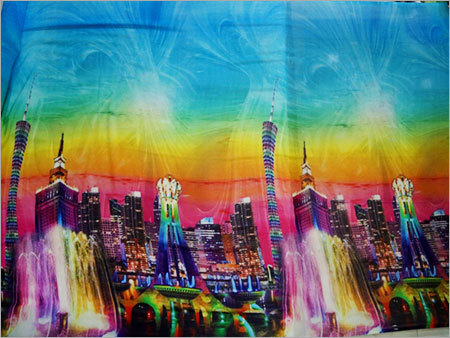In the previous article we looked at ink selection. Now we will follow the process through to the complete printed fabric.
Fabric Selection
Choosing the right fabric can be a daunting task since there are so many available. Making sure you have the appropriate fabric and ink combination is essential for high print quality. To attain the best print quality, fastidious attention must be paid to the quality of fabric since errors at this stage can lead to bigger problems further along in the production process. Surface defects can not only worsen the print quality but can be detrimental to printhead life. Undesirable fabric attributes include broken fibres or filaments, wrinkles or creases, the presence of lint and non-uniform surface tension throughout the fabric. There are also dimensional issues to consider such as shrinkage. Distortion can occur during post-treatment if the fabric has not been preshrunk at the beginning of the production process. Knitted fabrics are particularly susceptible to stretch distortion during both printing and coating so maximum dexterity is recommended. Many other fabric defects can occur.
Pretreatment
Before printing can take place, the fabric must be coated in a solution specific to the ink technology being used (except pigment inks which usually do not require pre-treatment). This is an essential process to maximise the substrate’s absorption levels and reactivity to the ink, while also minimising lateral bleeding which may impact colour definition and intensity. While pre-treated fabrics are becoming more readily available, specific chemical formulations are usually patented and confidential. Chemical solutions range from simple to very complex. Simple formulations use soda ash, alginate or urea, while complex formulations can be made from combinations of polymers, inorganic particulates, cationic agents and softeners. Regardless of the particular formulation, the process for applying the pre-treatment is the same: the fabric is fully submerged in a vat of the pre-treatment solution and subsequently hung out to dry in the open air.
Fixation
Once inkjet printing is complete, dying exhaustion must take place in order to completely fix the ink to the substrate. Each ink technology has different fixation requirements.
1) Reactive ink printed substrates are fixed by steaming in atmospheric steamers for 8-10 minutes at temperatures of 100-101˚C (212-214˚F). In pressurised steamers the duration is usually 20-30 minutes. When printed on a cellulosic fibre (e.g. rayon), the colorant is fixed to the fibre by covalent chemical bonding. The fabric must then undergo a washing procedure which consists of at least two cycles of differing water temperature. Each wash cycle removes an amount of extraneous unfixed dye left over from the printing procedure (loose dye can 'backstain' the fabric if not removed).
2) Acid inks are also fixed by steaming. The temperatures are the same as reactive based inks but the times are longer. In atmospheric steamers the duration is about 20 minutes and in pressurised steamers around 40-60 minutes. Several wash cycles are also necessary for this type of ink.
3) Disperse inks require different fixation methods depending on whether they are transferred from paper or printed directly onto the fabric. For the former, the paper is transferred in a press at 193-210˚C (380-410˚F) for 30-90 seconds. When disperse inks are directly printed on the fabric they must be cured or thermosoled (at the same temperature). Washing is also necessary.
4) Pigment inks are the easiest to fix, needing to be cured in an oven at 162-176˚C (325-350˚F) for 30-90 seconds. In some cases, UV curing rather than thermal curing is used, and the ink can be exposed to UV light during printing, giving a very simple production process.
Summary
With so many inks and textile fabrics to choose from, all with different properties, it is essential to select the right combination dependant on your application. To ensure optimal print quality, all stages of the production process must be carried out stringently. As market demands continue to change, digital technology has become more desirable as a method for printing onto textiles. The pros and cons of analogue vs. digital will depend on the requirements of the job at hand. However, digital printing’s unique advantage is the rapid introduction of new designs produced economically at shorter run lengths. Print houses are already offering digitally printed clothing items (both high and low quality) at an affordable rate. Digital production speed may not be as fast as analogue in most cases, but this gap is expected to close significantly in the future. As chemical, hardware and software technology continue to evolve, it is likely that the current application of inkjet printing in the textile industry is only the tip of the iceberg.
Tim Phillips, Catenary Solutions
Further Reading

